How do I calculate the equivalent Thevenin resistance of the small-signal model of a diode-connected transistor (base tied to collector)? Early-effect is neglected. The port of interest is between C and E.
In the figure, \$v_{\pi}\$ is the small-signal voltage between B and E. I did the lower two circuits, so I'm not sure if the \$v_{\text{thev}}\$ and \$i_{\text{nor}}\$ are correct. But if they are, then I get
$$Z_{\text{thev}} = \frac{v_{\text{thev}}}{i_{\text{nor}}} = -\frac{1}{g_m}$$
which isn't the same to the one I get when I apply a test voltage \$v_x\$ to the port, and set independent voltage source \$v_{\pi}\$ to zero. Then I just have a short circuit and can't calculate:
$$Z_{\text{thev}} = \frac{v_{x}}{i_{x}} $$